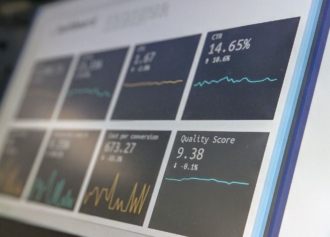The rules of an Olympic relay race are simple.
Each team has four athletes who run as fast as they can (for a set distance) before passing a baton to the next runner. The fastest team wins.
The baton handoff, though, is not always simple.
Imagine passing an 11-inch tube to your teammate while sprinting at top speed. And at the 2008 Summer Games, 16 of the 32 British sprint relay teams were disqualified for incorrect or non-existent baton handovers.
Experts called the problem “failure to connect.”
The botched handovers occurred in a split second, but they had devastating results for the athletes, coaches, and disappointed British fans.
The problem of constraints
A relay race is just one way to understand the Theory of Constraints (TOC), which was outlined in the classic 1992 book, The Goal.
If the race is a business, and the goal is to win (increase profits), passing the baton is the constraint.
It’s a factor that prevents the organization from getting more of what it wants (gold medals).
The British runners could have been faster, fitter, and mentally tougher than their competitors. But that one constraint — effectively passing the baton — cost them the podium.
A chain is only as strong as its weakest link, and the handoff was the weak point. It broke the whole chain.
The Goal, by Eliyahu M. Goldratt, originally focused on the manufacturing industry and eliminating bottlenecks on the factory floor. But, the core theory applies to companies of every shape and size.
It can also be a game-changer for solopreneurs, freelancers, and anyone who wants to achieve more in their life and work.
In the 12 years since I started my company, Jotform, working with Theory of Constraints (TOC) has been invaluable.
This approach has helped us to grow from one employee to over 100, and to create a product that serves nearly 4 million users.
Before we continue, I want to emphasize that I’m not a true expert here. TOC is a nuanced theory studied by scholars and business leaders worldwide.
However, I’ve spent years researching and applying it to our product. I want to give you a brief rundown, because I believe it can help you, too.
It’s all about the F-word
Despite its complexity, you can summarize TOC in one word:
Focus
We all know what “focus” means, but it has two distinct applications here.
1. Doing what should be done
2. Not doing what shouldn’t be done
It sounds easy, right? Yet, it can be incredibly difficult to stay on track — to avoid getting distracted by minor problems or obsessing about one element (like running faster), when a critical detail (like passing the baton) will actually prevent you from achieving your goal.
Those critical details are constraints, which I use interchangeably with the word “bottlenecks.”
The ultimate goal of TOC is to increase profits by increasing throughput, which is the rate at which an organization generates money by selling its products or services.
Remember that you can swap out “profits” for whatever you want to achieve — from building muscle to growing your business to working less and playing more.
And your throughput is simply the time it takes to reach that end state.
TOC is also related to the Pareto Principle or 80/20 rule, which states that 80% of your results come from 20% of the efforts.
Focusing on what should be done (eliminating the constraint) and ignoring what shouldn’t is the core of Goldratt’s theory.
A five-step process
TOC has five distinct steps. Here’s a quick rundown.
1. Identify the constraint
Find the bottleneck in your business, product, processes or even your market.
Every system will have multiple constraints, but your challenge is to identify the biggest, most critical friction point — like passing the baton.
How do you find the right constraint? It looks a little different for everyone, and for every situation, but it requires research and reflection.
At Jotform, we spend a full year focusing on one constraint. This year is about data. We’re all working to enhance user productivity by leveraging data.
We identified our data constraint through customer interviews, surveys, team discussions, product analysis, and some candid feedback from users and even interns.
We went deep — and by the end of 2017, we knew we had picked the right constraint.
2. Define how to exploit the constraint
Once you find the constraint, the next step is to remove, address or streamline it.
At Jotform, we realized that our data tools were not up to par. So, we analyzed everything from product features to page designs to mobile functionality.
We decided how we were going to improve these tools — or, at least, how we would attempt to make them better.
We didn’t have all the solutions yet, and that’s okay.
You can start where you are.
3. Subordinate everything else
If a constraint is truly blocking progress, it demands your full attention. Apply your time and resources to eliminating this core bottleneck.
For example, maybe you want to finish a novel and time is your biggest constraint.
So, you exploit that constraint by getting up early and writing for two hours before work.
Subordinating everything else means now is not the time to try morning meditation.
Don’t start making complicated smoothies for breakfast. Make sure you go to bed early and forget about pushing yourself to run 5 miles after work. Put on your blinders and write.
4. Elevate the constraint
Exploiting or removing constraints is an iterative process. It’s not about finding one solution, but thinking as creatively as possible and exploring multiple options.
Again, if time is your constraint, and a finished novel is the goal, how else could you carve out more focused, productive writing time?
Maybe you plan a four-hour writing session on Saturday. You could also take a vacation day, push those 2-hour morning blocks into 2.5 hours, or add an after-work writing sprint. The possibilities are endless.
In TOC, elevating the constraint means trying, testing, and adapting.
Find what works for you, but stay laser-focused on your goal.
5. Repeat
You can repeat this process with the same goal in mind (like writing a novel). Just pick a different constraint.
Instead of time, for example, you could focus on writing more creativity. In this case, eliminating the constraint means doing whatever it takes to stretch your imagination.
In business, though, the end goal is usually the same. We all want to increase profits or better serve our customers or improve the end product.
Your mission doesn’t usually change. So, repeating the TOC process means picking a new roadblock.
Determine what else is getting in your way and use the five steps to obliterate it.
Consider these 3 constraints
Now that you know the five core steps, here are three important constraints to watch for as you apply TOC:
1. Local optimums
It’s easy to get distracted with non-constraints, or local optimums.
These are “problems” that don’t affect the chain, but they seem important or easy to solve.
People often get obsessed with perfecting local optimums. For example, many organizations want to maximize staff work hours.
But if creating a great product is the company’s main constraint, then logging too many hours will overtax valuable employees.
They’ll get tired, work on autopilot, and unintentionally introduce bugs into the system. They may even resent their jobs. Staff who are rested, stable and happy, however, will create a far better product.
2. Dummy constraints
A dummy constraint is a constraint that’s inexpensive to solve, relative to other resources in your system.
For example, if employees are struggling with slow computers and outdated software, it makes more financial sense to equip them with powerful, state-of-the art computers, because their productivity gains will far outweigh the resource cost.
In most cases, computers are a relatively inexpensive constraint to eliminate (the key word being relative).
3. Market constraints
The market itself can be another important constraint for businesses and individuals.
For example, we’ll lose customers if our product is difficult to use. So, we conduct a SWOT analysis, find our weak links, and pinpoint features that often elicit user questions.
Then, we look at user activation rates and other numbers to see if we’re truly improving usability.
Constraints are always changing — but you may not be
Solving constraints is like playing the carnival game, Whack-A-Mole.
Just as you fix one constraint, another shows up to take its place. And over time, it gets tougher to see the new ones.
It’s easy to go back to the old problems since you know them well. They don’t require as much mental energy.
Here are three ways to ensure you’re identifying and solving real constraints.
1. Listen carefully
Customers and clients will tell you the truth — if you ask for honesty and keep an open mind.
For example, it’s not easy to hear that your product is ugly, or that it’s confusing and out of date.
But that’s exactly what some critics told us in 2016.
So, we got to work and revamped our Form Builder in early 2017.
The new version drew almost a million new signups in a year. We listened (even when it was uncomfortable) and addressed our biggest constraint.
2. Introduce new blood — and fresh ideas
We all get used to our own ideas, routines, and systems. They feel “right.” They feel safe.
That’s why it’s so important to regularly bring in new talent — which could come from interns, consultants, or veterans from another industry.
Expose your work to people who don’t care how “you’ve always done it.”
If you’re a solopreneur, you could also join a mastermind group, take a course, or read blog posts and books on your constraint.
3. Delegate when necessary
If you don’t have the time or resources to remove a key constraint, offload the task to a team member or an outside resource.
If your financial systems are a true bottleneck, for example, it’s time to hire an accountant or a financial manager.
If you’re just starting out and budgets are tight, consider trading services with a fellow entrepreneur.
I hope this quick TOC primer helps you in your life and work. And if you get stuck, keep going back to those 5 core steps, and the 3 points above.
The more you work with it, the better it should work for you.















Send Comment:
1 Comments:
More than a year ago
Hey Aytekin!
Amazing post.